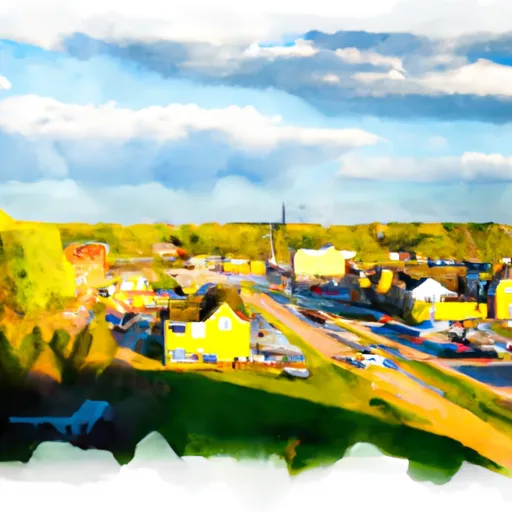-
 Snoflo Premium
Snoflo Premium
Get unlimited access to all our content
With no Ad interruptions! - Start Your Free Trial Login with existing account
Trout-Creek
Eden Index
Climate
5.5
•
Recreation
4.4
•
Community
•
Safeguard
3.7/10

Trout Creek, Michigan is a small unincorporated community located in the Upper Peninsula of Michigan. It has a cold and temperate climate with long, snowy winters and pleasant summers. The area experiences heavy snowfall, making it a popular destination for winter sports enthusiasts.
Trout Creek is surrounded by the Ottawa National Forest, which boasts an abundance of lakes, rivers, and streams. The hydrology constituents of this area are mainly comprised of rivers, such as the Ontonagon River and Paint River, and several smaller lakes. These water bodies offer excellent opportunities for fishing, boating, and kayaking.
The region is known for its vast forests and diverse wildlife, making it a great destination for hiking, camping, and wildlife watching. The Ottawa National Forest provides numerous trails for hiking and biking, allowing visitors to explore and enjoy the natural beauty of the area.
With its beautiful landscapes and outdoor recreational opportunities, Trout Creek, Michigan is a haven for nature lovers and those seeking a peaceful retreat in the midst of stunning wilderness.
What is the Eden Index?
The Snoflo Eden Index serves as a comprehensive rating system for regions, evaluating their desirability through a holistic assessment of climate health, outdoor recreation opportunities, and natural disaster risk, acknowledging the profound impact of these factors on livability and well-being.
Climate Health Indicator (CHI): 5.5
Trout-Creek receives approximately
727mm of rain per year,
with humidity levels near 83%
and air temperatures averaging around
5°C.
Trout-Creek has a plant hardyness factor of
4, meaning
plants and agriculture in this region thrive during a short period during spring and early summer. Most
plants will die off during the colder winter months.
By considering the ideal temperature range, reliable water supplies, clean air, and stable seasonal rain or snowpacks, the Climate Health Indicator (CHI) underscores the significance of a healthy climate as the foundation for quality living.
A healthy climate is paramount for ensuring a high quality of life and livability in a region, fostering both physical well-being and environmental harmony. This can be characterized by ideal temperatures, reliable access to water supplies, clean air, and consistent seasonal rain or snowpacks.
Weather Forecast
Streamflow Conditions
Southcentral Lake Superior
Area Rivers
Southcentral Lake Superior
Snowpack Depths
Southcentral Lake Superior
Reservoir Storage Capacity
Southcentral Lake Superior
Groundwater Levels
Recreational Opportunity Index (ROI): 4.4
The Recreational Opportunity Index (ROI) recognizes the value of outdoor recreational options, such as parks, hiking trails, camping sites, and fishing spots, while acknowledging that climate plays a pivotal role in ensuring the comfort and consistency of these experiences.
Access to outdoor recreational opportunities, encompassing activities such as parks, hiking, camping, and fishing, is crucial for overall well-being, and the climate plays a pivotal role in enabling and enhancing these experiences, ensuring that individuals can engage in nature-based activities comfortably and consistently.
Camping Areas
| Campground | Campsites | Reservations | Toilets | Showers | Elevation |
|---|---|---|---|---|---|
| Chippewa Park | 62 | 602 ft | |||
| Clinton Lake State Rec Area | 310 | 725 ft | |||
| Comlara County Park | 137 | 756 ft | |||
| Weldon Springs State Park | 75 | 717 ft | |||
| Starved Rock State Park | 135 | 511 ft | |||
| Faries Park | 37 | 618 ft | |||
| West Lake - Sleeping Giant Provincial Park | 10 | 753 ft | |||
| Ramsey Lake State Park | 160 | 628 ft | |||
| Mary Louise Lake - Sleeping Giant Provincial Park | 170 | 767 ft | |||
| Trowbridge Falls Park | 122 | 838 ft |
Nearby Ski Areas
Catastrophe Safeguard Index (CSI):
The Catastrophe Safeguard Index (CSI) recognizes that natural disaster risk, encompassing floods, fires, hurricanes, and tornadoes, can drastically affect safety and the overall appeal of an area.
The level of natural disaster risk in a region significantly affects safety and the overall livability, with climate change amplifying these risks by potentially increasing the frequency and intensity of events like floods, fires, hurricanes, and tornadoes, thereby posing substantial challenges to community resilience and well-being.
Community Resilience Indicator (CRI):
The Community Resilience Indicator (CRI) recognizes that education, healthcare, and socioeconomics are crucial to the well-being of a region. The CRI acknowledges the profound impact of these elements on residents' overall quality of life. By evaluating educational resources, healthcare accessibility, and economic inclusivity, the index captures the essential aspects that contribute to a thriving community, fostering resident satisfaction, equity, and social cohesion.

